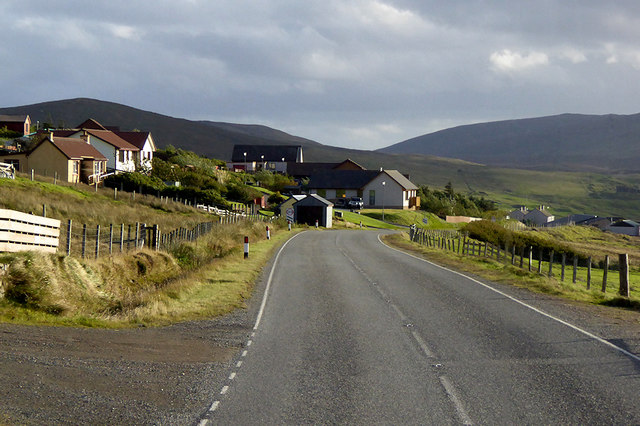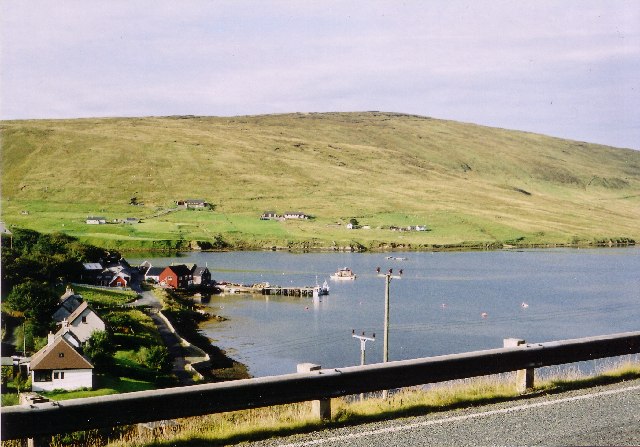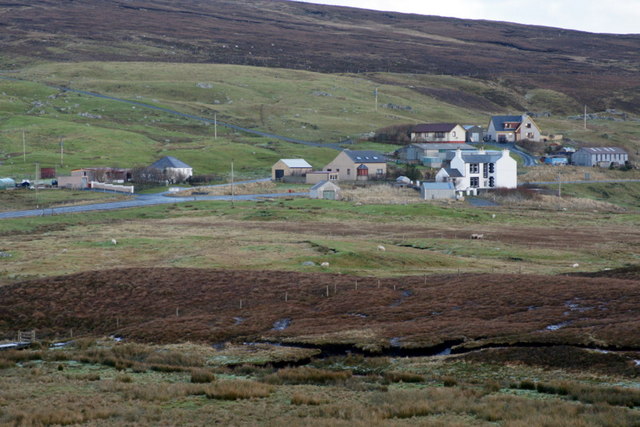Ayre of Kurkigarth
Coastal Marsh, Saltings in Shetland
Scotland
Ayre of Kurkigarth

Ayre of Kurkigarth is a coastal marsh located in the Shetland Islands, situated off the northeastern coast of Scotland. It is specifically found in the region of Saltings, near the village of Cunningsburgh. This marshland is characterized by its flat and low-lying terrain, consisting of a mix of salt marshes and mudflats.
The Ayre of Kurkigarth is directly influenced by both the North Sea and the Atlantic Ocean, resulting in a diverse and unique coastal ecosystem. The marshes are regularly flooded by tidal waters, creating a dynamic environment that supports a variety of plant and animal species.
The vegetation within Ayre of Kurkigarth is predominantly salt-tolerant, with plants such as sea lavender, sea aster, and sea purslane thriving in the marshy conditions. These plants play a crucial role in stabilizing the soil and preventing erosion. Additionally, the marshes serve as an important habitat for numerous bird species, including waders like oystercatchers and curlews, as well as migratory birds that visit the area during different seasons.
The Ayre of Kurkigarth is also of archaeological significance, with traces of prehistoric settlements uncovered in the surrounding area. These findings provide valuable insights into the history and human occupation of the region.
Overall, Ayre of Kurkigarth in Shetland is a fascinating coastal marsh characterized by its diverse vegetation, tidal inundation, and significant ecological value.
If you have any feedback on the listing, please let us know in the comments section below.
Ayre of Kurkigarth Images
Images are sourced within 2km of 60.359101/-1.2936462 or Grid Reference HU3964. Thanks to Geograph Open Source API. All images are credited.






Ayre of Kurkigarth is located at Grid Ref: HU3964 (Lat: 60.359101, Lng: -1.2936462)
Unitary Authority: Shetland Islands
Police Authority: Highlands and Islands
What 3 Words
///hydrant.rebounder.glow. Near Brae, Shetland Islands
Nearby Locations
Related Wikis
Voe, Delting
Voe is a village in Delting parish on Mainland, Shetland, Scotland. It is one of the three main settlements in Delting. It is at the junction of the A968...
Linga, Busta Voe
Linga is a small, uninhabited island, 1 km (0.62 mi) east of Muckle Roe in the Shetland Islands. The island is roughly circular in shape and its highest...
Shetland
Shetland, also called the Shetland Islands and formerly Zetland, is an archipelago in Scotland lying between Orkney, the Faroe Islands, and Norway. It...
Delting
Delting is a civil parish and community council area on Mainland, Shetland, Scotland. It includes the Sullom Voe oil terminal and its main settlements...
Busta Voe
Busta Voe, (HU665350), in the north central Mainland, Shetland, is a sea inlet lying between the village of Brae and the island of Muckle Roe. At the head...
Brae
"Brae" is also the Lowland Scots language word for the slope or brow of a hill.Brae (Old Norse: Breiðeið, meaning "the wide isthmus") is a village on the...
Laxo
Laxo is a small settlement at the end of Laxo Voe in Vidlin, Shetland, Scotland. A ferry from the Mainland to Symbister in Whalsay operates from the nearby...
Papa Little
Papa Little (Scots: Papa Little; Old Norse: Papey Litla, meaning "the little island of the priests") is an island in St Magnus Bay, Shetland, Scotland...
Nearby Amenities
Located within 500m of 60.359101,-1.2936462Have you been to Ayre of Kurkigarth?
Leave your review of Ayre of Kurkigarth below (or comments, questions and feedback).














